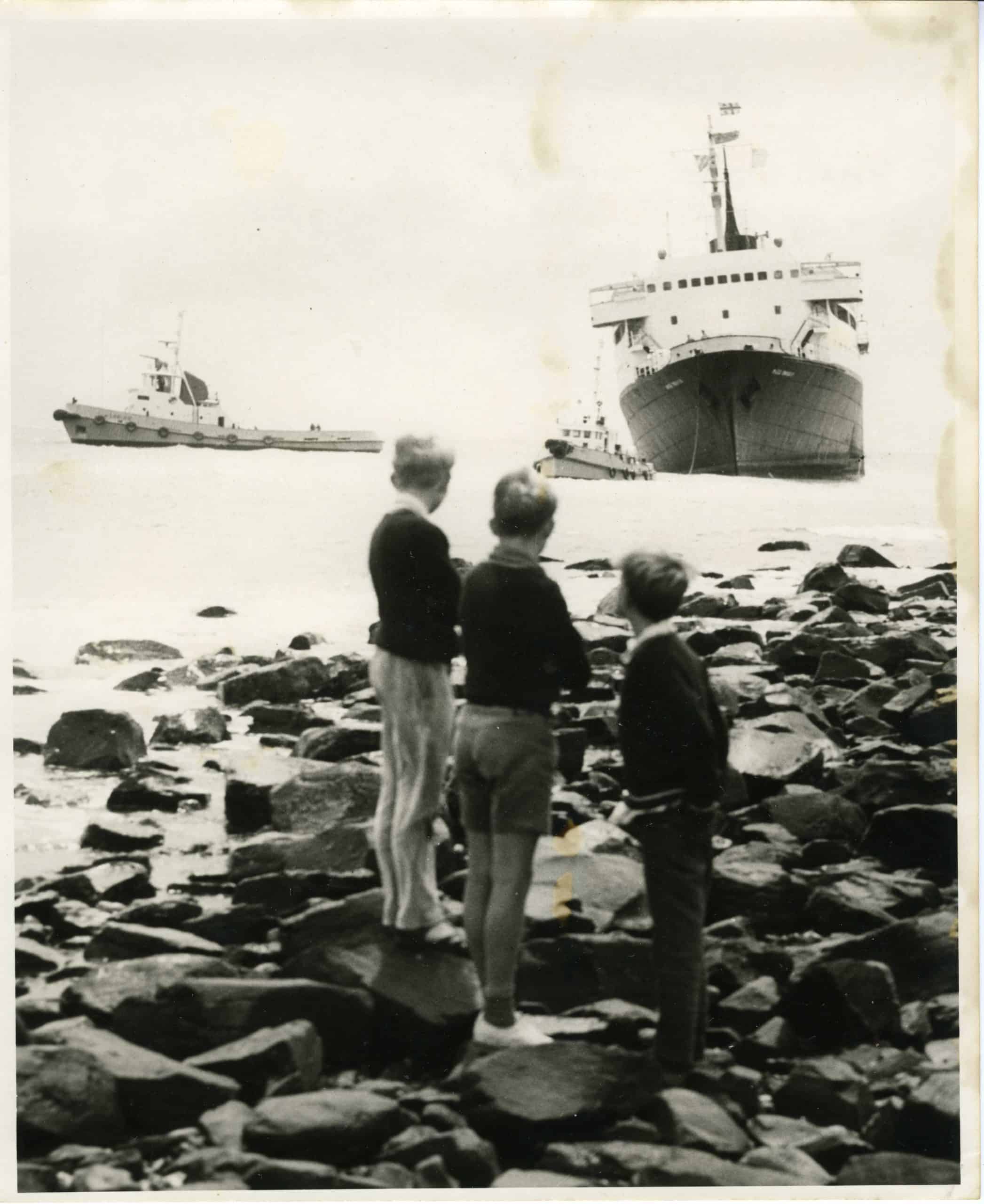The Bass Trader
By Leah Johnson
Designed by the Australian Shipbuilding Board to the requirements of the Australian National Line, the Bass Trader was built in NSW by the Newcastle State Dockyard and completed in 1961. She was 1824 tons and unique in that she was Australian’s first roll on, roll off vehicle/container ship, opening up a new and important chapter in the Australian National Line’s story.
The Bass Trader was to carry general cargo and freight vehicles, and accommodation was only provided for drivers accompanying their trucks. She had a crew of thirty one, and had extra accommodation for twelve truck drivers. The vessel could carry sixty semi-trailers, and also twenty standard sized containers on the upper deck, which had to be lifted on and off by shore crane. The loading procedure and lashing system were designed to ensure a high degree of security for items during transport. Her route took her from Melbourne to Northern Tasmania, making one trip a week to Bell Bay, Burnie and Devonport.
The Bass Trader was fitted with twin controllable pitch propellers powered by a pair of 18 cylinder 2-stroke cycle single acting Deltic diesel engines, built by D. Napier and Son of Liverpool England. She was the first vessel in the world to be fitted with engines on the principal of “main engine repair by replacement.” Each of the diesel engines weighed only five tons and in the case of failure was designed to be replaced by a spare engine kept ashore. This could be done in a matter of hours and meant the ship would not have to be taken out of service for mechanical repairs, allowing repairs and maintenance to be carried out without interfering with the ship’s schedule.
The Bass Trader cost more than $AUD 1 million when she was completed.1 She was replaced by a second Bass Trader in 1976

The Bass Trader encountered rough weather on her voyage from Melbourne to Devonport and was running around three hours late when she entered the mouth of the river and ran aground.
Mr Claud Smith was eating his lunch in the reserve on Victoria Parade when he heard a loud noise like a clap of rolling thunder around 12.55pm. Turning around, he saw the Bass Trader stuck on the breakwater, listing badly to starboard.
The water was rough, the tide was going out and it was feared the vessel would be stranded until the next tide. The tug Mersey attached a line to the ferry’s stern which was then passed to the Gawler, and the Mersey then attached a bow line. It took more than twenty minutes to pull the Bass Trader free, after which she was able to continue under her own power to the Devonport Ferry terminal. Devonport Marine Board diver Mr David Jago inspected the ship and found no serious damage.
References:
- V. Bass Trader. 12 page booklet. The Australian Line.Ferry To Tasmania: A Short History – Peter Plowman. Chiswick Publications Pty Ltd 2004
The Advocate Saturday 16th December 1967
Images:
Header: Bass Trader, by Fred Reid.
Inset: BSMC.2011.050 Bass Trader run aground, 1967, Photographer unknown.

